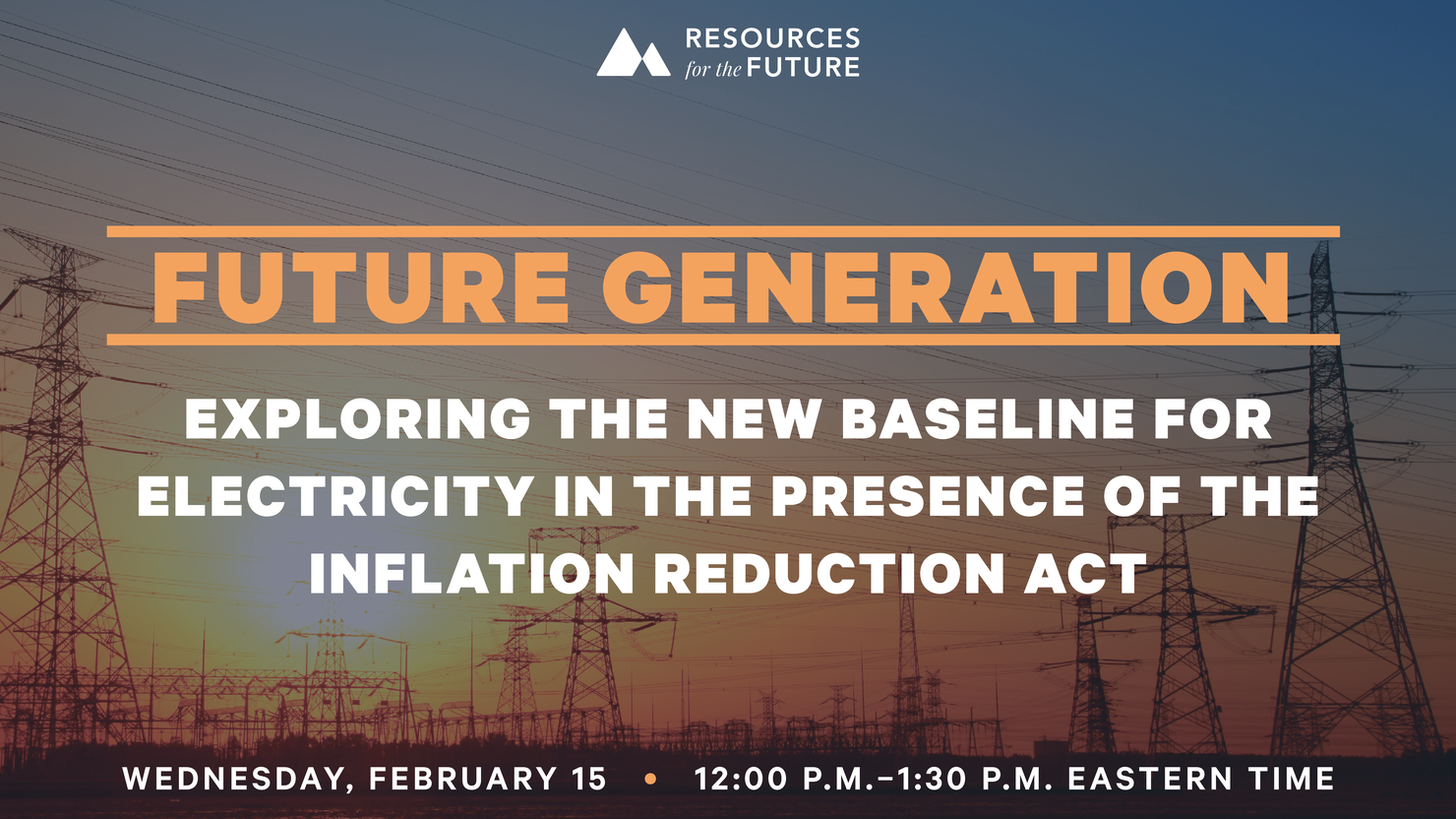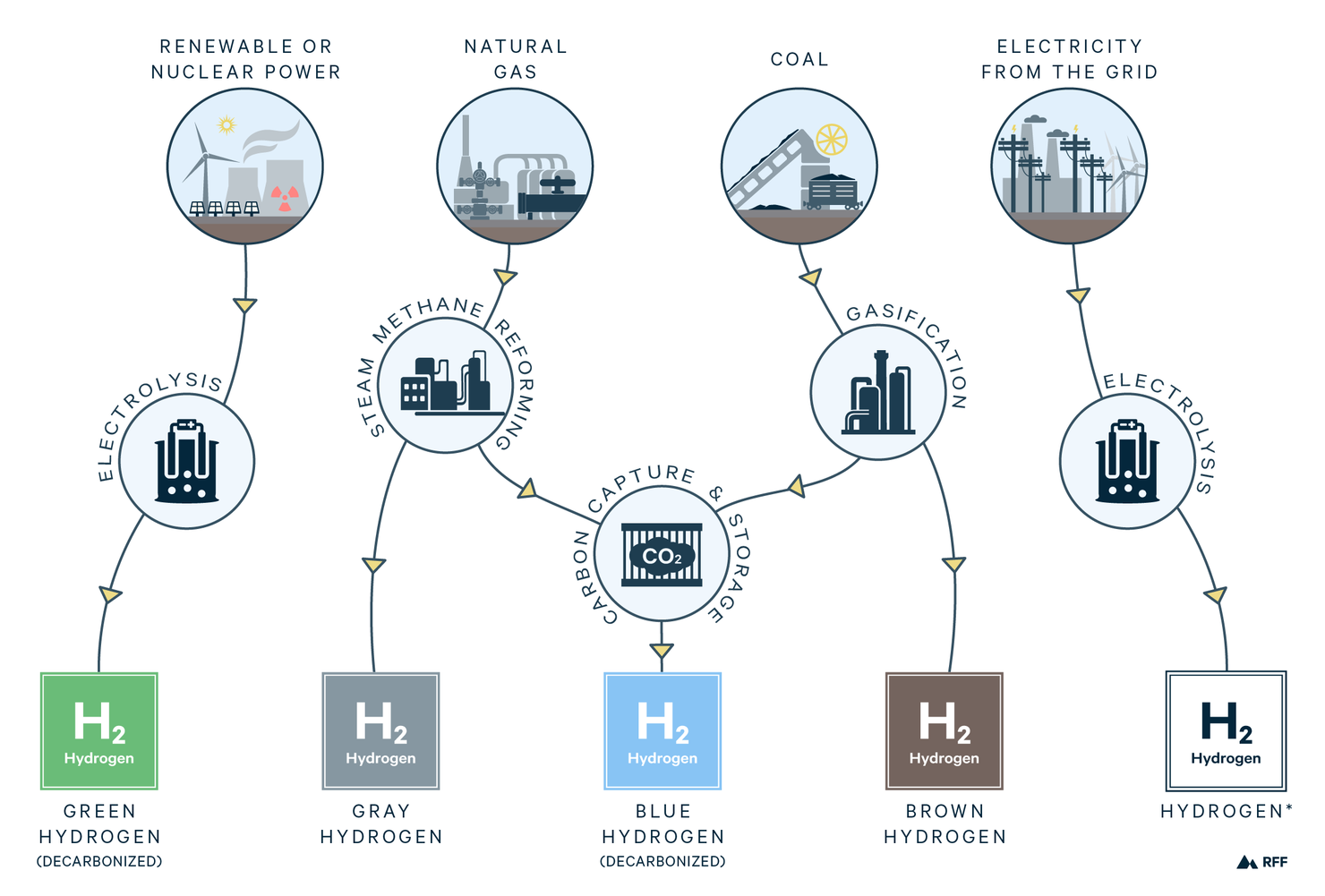Twice a month, we’re compiling the most relevant news stories from diverse sources online, connecting the latest environmental and energy economics research to global current events, real-time public discourse, and policy decisions. Keep reading, and feel free to send us your feedback.
Here are some questions we’re asking and addressing with our research chops this week:
As investments in hydrogen fuel grow, where are those investments going?
Interest in hydrogen fuel is spreading. India plans to announce a national bidding process for subsidies as part of a $2-billion government hydrogen program; in Europe, the German government has announced €80 million of funding for the development of hydrogen production facilities that will support the transportation sector. In the United States, the Department of Energy (DOE) has encouraged 33 of 79 initial applicants to submit full proposals for funding that’s tied to the agency’s Regional Clean Hydrogen Hubs program; the final applications are due in April. The process by which DOE has selected these applicants, however, has not been fully transparent. In a pair of new blog posts, Resources for the Future (RFF) scholars Lucie Bioret, Yuqi Zhu, and Alan Krupnick examine the applicants that DOE has encouraged and why the agency may have discouraged others. “Scale appears to matter to DOE,” they say. “The agency seems to prioritize larger—and likely more ambitious—endeavors, rather than pilot-scale projects.”
How do clean energy subsidies aim to encourage industry-sector investments?
EU Commission President Ursula von der Leyen announced a “Green Deal Industrial Plan,” which would provide subsidies for clean energy projects in the European Union. Part of the EU plan to increase competitiveness with nations that already incentivize zero- and low-carbon technologies offers tax breaks for firms that invest in clean energy technologies. The EU plan echoes the Inflation Reduction Act, which the US Congress passed in 2022 and which contains similar tax incentives. In a new episode of the Resources Radio podcast, RFF scholars Aaron Bergman and Alan Krupnick discuss how two tax incentives in the law encourage the development of one clean energy technology: hydrogen fuel. “If you can produce hydrogen with zero emissions, you get a relatively high subsidy,” says Bergman. “As the amount of emissions that is associated with producing the hydrogen goes up, the amount of money you receive eventually goes down to zero.”
What legal hurdles might the Supreme Court pose for new environmental regulations?
The US Supreme Court recently issued its first ruling of the 2022–2023 term. Expected later in the court’s term is a decision on Sackett v. US Environmental Protection Agency (EPA)—one of several Supreme Court cases about environmental and climate regulations and policy that are being decided this year. A major court case influenced climate policy last year, too: in West Virginia v. EPA, the Supreme Court limited EPA’s ability to regulate carbon emissions. After the decision, RFF University Fellow Robert N. Stavins interviewed legal expert Jeffrey R. Holmstead on the Environmental Insights podcast, to debrief on the implications of West Virginia v. EPA, potential legal issues with environmental regulations, and the future of US climate policy more broadly. “My hope … is that we’ll not only look at regulatory approaches,” said Holmstead, “but that we’ll also consider whether those approaches are the best way to incentivize next-generation technologies, or whether there are other actions that the government could take.”

Expert Perspectives
Biden Administration Passes Rules to Protect Tongass National Forest in Alaska
The US Department of Agriculture has announced a ban on logging and new timber roads in over half of Tongass National Forest in Alaska. Tongass, a temperate rainforest about as large as the state of West Virginia, holds 8 percent of the carbon that is stored by US forests.
“The action is a moment to reflect on the important role of forests in US climate strategy,” says James Boyd, a senior fellow and director of the Land Use, Forestry, and Agriculture Program at RFF. “The Biden administration has demonstrated that it’s listening to the Native nations in southeast Alaska, who have been calling for these bans in Tongass since the previous protections were lifted in 2020, and the ban will help protect the Tongass as a carbon sink. However, we shouldn’t lose sight of the fact that, nationally, and in other parts of the country, working forests—including commercial timber operations—also can be an important source of carbon removal and storage.”
In Focus: Developing Hydrogen in the United States
Hydrogen fuel has received increased attention in part due to its versatility as an emissions-reduction tool in the clean energy transition. In the latest installment of our In Focus video series, RFF Fellow Aaron Bergman discusses the current and potential uses of hydrogen and how the federal government is supporting the development of a hydrogen industry in the United States.

Resources Roundup

Electricity Generation Under the Inflation Reduction Act
What does the future of electricity look like in the wake of major new climate policies, including the Inflation Reduction Act and the Infrastructure Investment and Jobs Act? In a virtual RFF Live event on February 15, Resources for the Future (RFF) and the Electric Power Research Institute (EPRI) will present recent findings about the effects of both laws on the electricity sector, along with new power-sector modeling. RSVP here to register for the virtual event.
Disentangling Fossil Fuels from the Global Economy
Reducing fossil fuel use is a challenge inherent to the clean energy transition. On a recent episode of Policycast, a podcast produced by Harvard Kennedy School, RFF University Fellow Joseph E. Aldy shares his expertise on the work that’s required to shift the global energy supply from fossil fuels to clean energy. “I think C-suite and business America is moving on this,” says Aldy. “They recognize that it is now an imperative.”
Examining Policy for Coastal Climate Adaptation
In 1982, the US Congress passed the Coastal Barrier Resources Act, which aimed to discourage development in areas that are vulnerable to storm damage and to protect coastal ecosystems. In a forthcoming study, RFF scholars will share their evaluation of the effects of this legislation. An article from the Lincoln Institute of Land Policy that discusses the rationale for the research features insights from the scholars: “One thing that people talk about a lot is that we might be implicitly subsidizing people to live in [risky] places,” says Margaret Walls, a senior fellow at RFF.
How is New York Planning Its Clean Energy Transition?
New York State recently unveiled a bundle of strategies, which are contained in the state’s so-called Scoping Plan, to help the state achieve its emissions-reduction goals. On last week’s episode of the Resources Radio podcast, the state’s Director of the Office of Climate Change, Maureen Leddy, reviews how a state-organized council developed the Scoping Plan and the special areas of focus within it. “The plan leans heavily on energy efficiency and end-use electrification in transportation and buildings,“ says Leddy.
Scholarly Diversity in the Field of Environmental and Resource Economics
On another recent episode of Resources Radio, economics faculty Neha Khanna and Nick Kuminoff discuss scholarly diversity within the field of environmental and resource economics, including gender equity and diversity of academic background. “Environmental economics is like any area of science,” Kuminoff says. “It needs intellectual diversity in order to thrive. We’re only going to be able to advance scientific knowledge if we’re developing new ideas, new methods, and new applications.”

#ChartOfTheWeek

*Emissions depend on the mix of electricity sources on the grid.
Hydrogen gas is produced using a variety of methods and fuel inputs. Brown and gray hydrogen produce carbon dioxide emissions, while green and blue hydrogen minimize carbon dioxide as a byproduct. A given method of hydrogen production may transfer more easily to certain end uses. Depending on the context, specific application, or sector, one method of producing hydrogen fuel may be more effective than others in decarbonizing the economy. Provisions in the Inflation Reduction Act incentivize green and blue hydrogen in particular by offering tax credits for low-carbon hydrogen production and captured carbon dioxide emissions.









